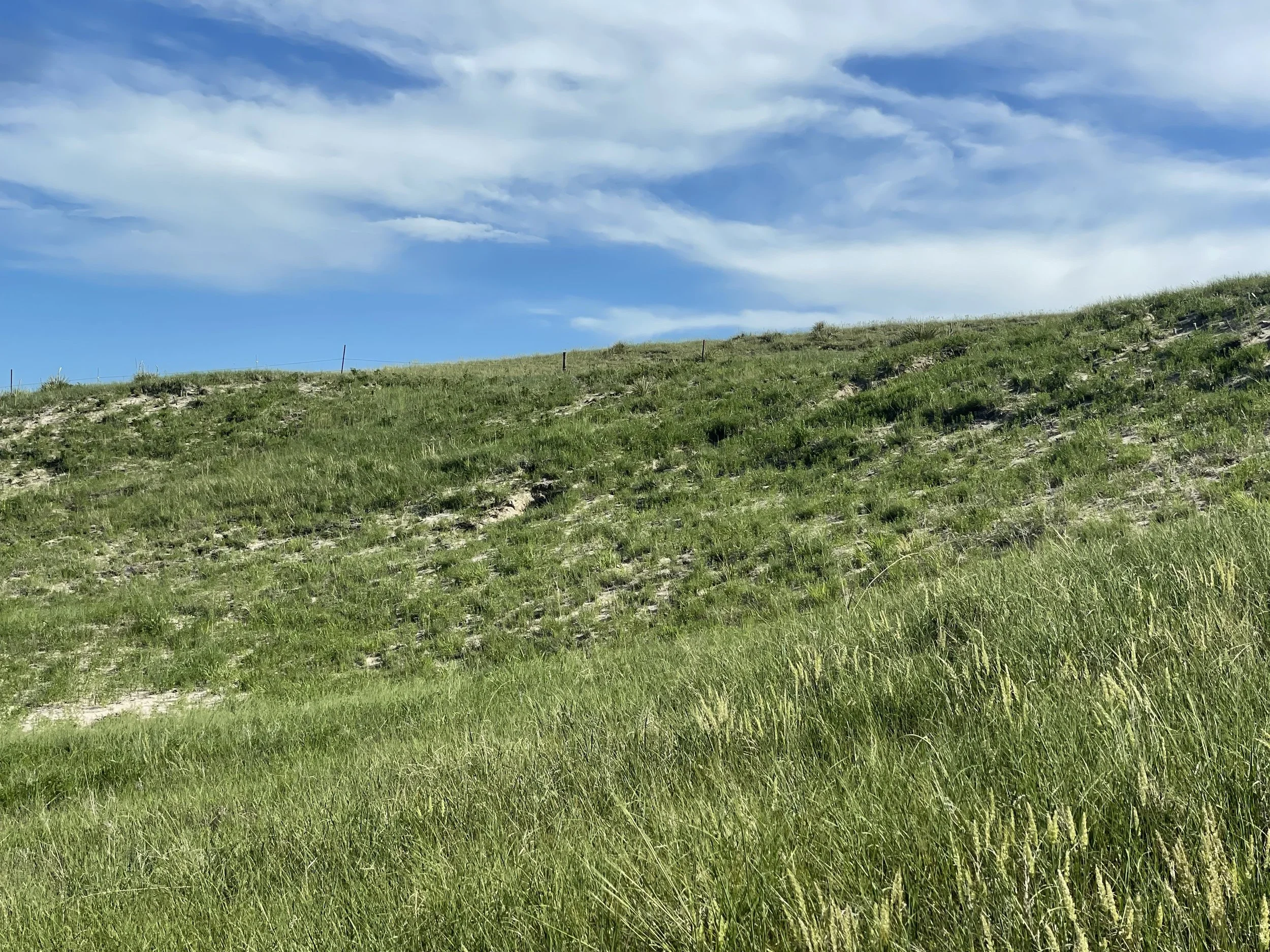Blowout Remediation Project
Completed installation of geotextiles and 14 differe prairie seeds
TJ Edwards, October 2017.
TJ Edwards created the Blowout Remediation Project to develop a cost effective way to return a blowout into graze-able prairie using materials that will decompose in the soil in a useful timeline for current owners. The project for the Sandhills Institute was completed October 2017 on Evelyn Crane’s land. It was an ideal location for this project, easily accessed and visible from Highway 250. This blowout has been an issue for the landowner for a decade, as plants had not reestablished themselves on the exposed sand.
A blowout is an area of rapid wind erosion in which grasses with stabilizing root systems are depleted and sandy soil is exposed to the wind. The raw area of sand continues to expand, while windblown sand from the depression may begin to cover surrounding plants. The blowout that Edwards has selected is close to half an acre in size.
The intervention used three different geotextiles supplied by Belton Industries: Geojute Stabilizer, Geocoir 700, and Geocoir 900. The materials were distributed across the blowout in equal measure. The textiles were pinned in place using wooden stakes in a domino pattern. No metal was used for the installation. The textiles were chosen based on their advertised lifespan and because they are durable enough to withstand cattle traffic. All three of the textiles were seeded before the installation. The open weave of the material allows naturally traveling seed to be deposited through the covering, augmenting the growth of the prairie grasses.
After a specific procedure has been proven to be most functional, Edwards will generate an instructional guide that can be used as a starting point for ranchers who would like to make their own installations.
Current methodology of blowout remediation
Installing the geotextiles after planting seeds
Installing the geotextiles after planting seeds
Evelyn Crane installing the last stake
Project sign and description
Surveying the progress of regrowth
TJ Edwards returns see the progress of the project
TJ Edwards surveying the blowout
Staking down the geotextiles
Chadron State volunteers working on the project
The Golden Stake: the last of the 3,500 stakes installed in the Blowout Remediation Project
Process pictures of Blowout Remediation
Grass beginning to come through the geotextiles
TJ Edwards returns see the progress of the project
Process pictures of Blowout Remediation
Community Reception at the Blowout
Process pictures of Blowout Remediation
Nebraska Arts Council visiting Blowout Remediation
Blowout Remediation Project - Update (2022)
I have been monitoring TJ Edwards Blowout Remediation project for over five years now. For the most part, I can say it has been successful. Of the 13 prairie grasses we planted, we were able to see at least 9 of those grasses growing. Unfortunately, when the pandemic hit, I pretty much disappeared from the area and consequently the project had no one looking after it. The main goal was to keep cattle out of the blowout while it healed. I made the mistake of using electric fence to surround the project rather than barbed wire and, consequently, the fence was breached and cattle all but destroyed much of the progress we initially made. The material TJ used was true to its form, and in five years, started to disintegrate. However, the cattle quickened the process. Lessons learned! Even though we witnessed some bare spots, what seems to be happening is the sand was stabilized enough to maintain growth of some of the stronger grasses with a combination of weeds which is now covering most, if not all, of the blowout. Lack of rain was also a problem but for a year with little rain, I do believe this blowout of 15 years is looking pretty good. Time will tell, especially next year. Right now I’m inclined to let it go through its process as long as the sand stays stabilized. It is our goal to eventually present our findings at the local grassland conference.















